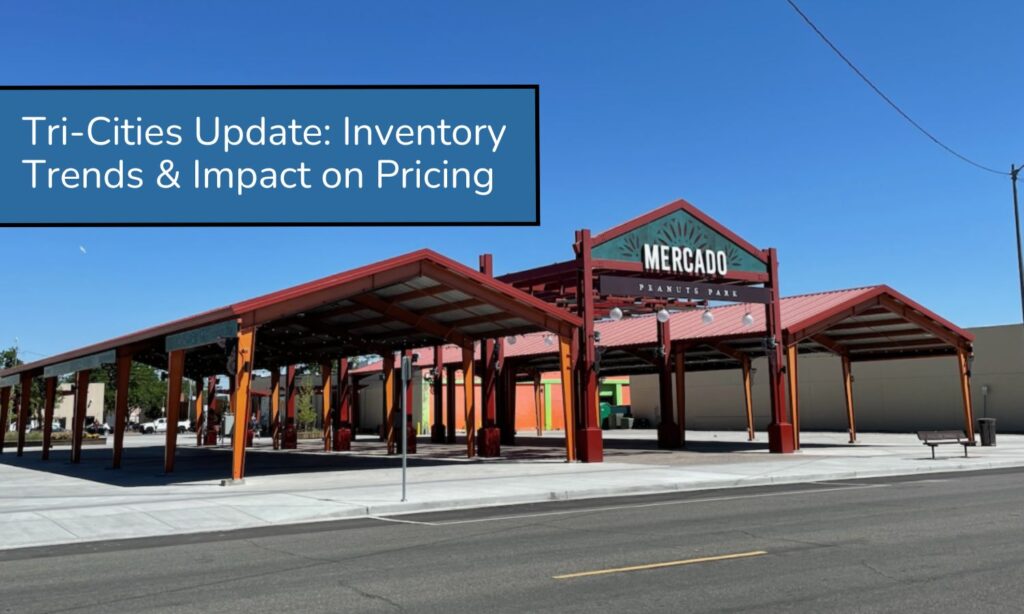Inventory levels play a crucial role in determining whether the market favors buyers or sellers. When inventory is low, competition increases, often leading to higher home prices. When more homes are available, buyers have more options and greater negotiating power. By examining inventory trends over the past four months, we can see how the number of available homes is shaping pricing dynamics across the Tri-Cities.
This analysis looks at West Richland, Richland, Pasco, and Kennewick, comparing inventory trends and their impact on pricing.
How Are Inventory Levels Changing?
Total Active Listings Over the Past Four Months
| City | Feb 2025 (MTD) | Jan 2025 | Dec 2024 | Nov 2024 | Trend |
|---|---|---|---|---|---|
| West Richland | 1 | 13 | 17 | 16 | Sharp decline in February |
| Richland | 3 | 46 | 24 | 49 | January surge, now slowing |
| Pasco | 4 | 58 | 41 | 44 | Inventory peaked in January, now declining |
| Kennewick | 5 | 73 | 44 | 55 | Drastic drop in February |
What Impact Does This Have on Pricing?
Average Sale Prices Over the Past Four Months
| City | Feb 2025 (MTD) | Jan 2025 | Dec 2024 | Nov 2024 | Trend |
|---|---|---|---|---|---|
| West Richland | $480,942 | $542,764 | $513,404 | $467,583 | Recent price dip despite lower inventory |
| Richland | $414,750 | $477,228 | $377,288 | $477,393 | Fluctuations, but lower prices in February |
| Pasco | No sales yet | $475,095 | $429,869 | $445,775 | Prices rising through January |
| Kennewick | $341,000 | $482,844 | $341,625 | $415,283 | Biggest price drop in February |
Key Takeaways
- February inventory levels have dropped significantly
- All four cities saw a steep decline in active listings this month, meaning fewer homes are available for buyers.
- West Richland has the most extreme drop, with only one new listing so far this month.
- Kennewick, which had the most inventory in January, saw the sharpest decline.
- Despite lower inventory, prices have fallen in February
- West Richland, Richland, and Kennewick have all seen average sale prices drop this month.
- Pasco’s pricing data is incomplete, but previous months showed price increases as inventory peaked.
- This suggests that buyers are negotiating more aggressively, even with fewer homes available.
- January was a high point for inventory and pricing
- More homes were on the market, giving buyers more options and boosting competition among sellers.
- Now that inventory is shrinking, we may see prices stabilize or even rebound if demand remains strong.
What This Means for Buyers and Sellers
For buyers:
- With fewer homes on the market, competition could increase in the coming weeks.
- However, recent price drops indicate that buyers still have some negotiating power.
For sellers:
- Lower inventory should work in your favor, but price trends suggest that buyers are pushing back on high listing prices.
- Sellers who price competitively may attract serious buyers faster, avoiding the risk of price cuts later.
Final Thoughts
Inventory levels in the Tri-Cities have dropped sharply in February, following a peak in January. Despite lower supply, prices have also dropped, suggesting a more balanced market where buyers and sellers are adjusting to shifting conditions. The next few months will be key in determining whether prices stabilize or begin to rise again.
If you’re considering buying or selling, staying ahead of these trends can make all the difference. For expert guidance, reach out toryan@kenmoreteam.com or call 509.987.4544.

